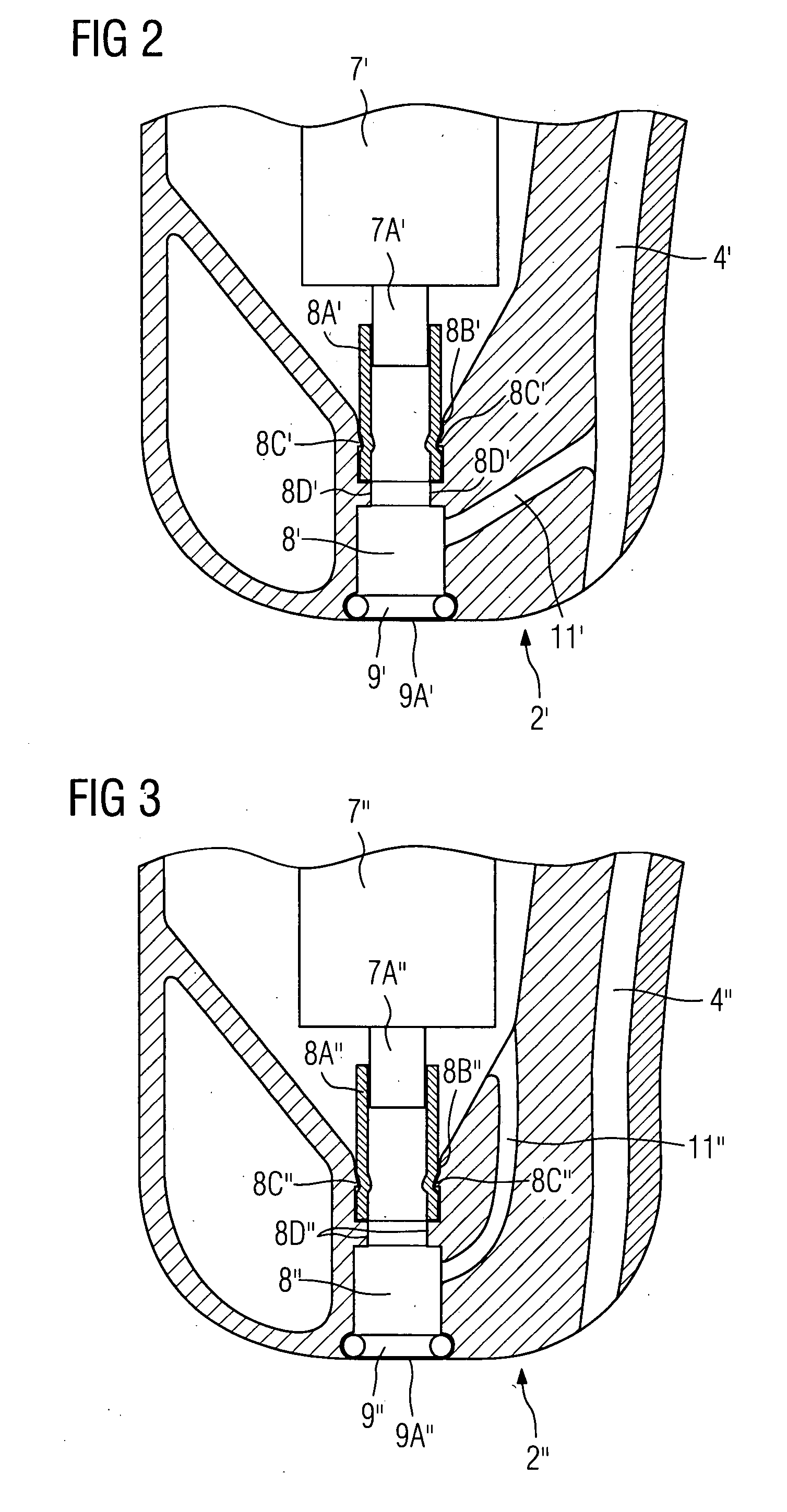In-the ear hearing aid device with a vent
a hearing aid device and in-the-ear technology, applied in the field of in-the-ear hearing aid devices with a housing, can solve the problems of contaminated in-ear hearing aid devices, acoustic impairment of hearing aid devices becoming unusable, and a major problem in cleaning such cerumen protection systems
- Summary
- Abstract
- Description
- Claims
- Application Information
AI Technical Summary
Benefits of technology
Problems solved by technology
Method used
Image
Examples
Embodiment Construction
[0026]With the variant according to FIG. 1 the in-the-ear hearing aid device 1 comprises a housing with a first housing area 2 facing the eardrum of a user when the hearing aid device is in position and a second housing area 3 facing away from the eardrum. The latter is generally referred to as the faceplate. The hearing aid device 1 is traversed between the first and second housing areas by a vent 4 to ventilate the auditory canal volume enclosed by the hearing aid device 1 when said hearing aid device 1 is in position. The housing of the hearing aid device 1 contains at least one microphone 5 to receive an acoustic input signal and convert said signal to an electrical signal, a signal processing unit 6 for processing and frequency-dependent amplification of the electrical signal and an earpiece 7 to convert the processed signal to an acoustic signal, which is fed to the ear of the user by way of a sound canal 8. A voltage source 10 in the form of a standard or rechargeable battery...
PUM
 Login to View More
Login to View More Abstract
Description
Claims
Application Information
 Login to View More
Login to View More - R&D
- Intellectual Property
- Life Sciences
- Materials
- Tech Scout
- Unparalleled Data Quality
- Higher Quality Content
- 60% Fewer Hallucinations
Browse by: Latest US Patents, China's latest patents, Technical Efficacy Thesaurus, Application Domain, Technology Topic, Popular Technical Reports.
© 2025 PatSnap. All rights reserved.Legal|Privacy policy|Modern Slavery Act Transparency Statement|Sitemap|About US| Contact US: help@patsnap.com



